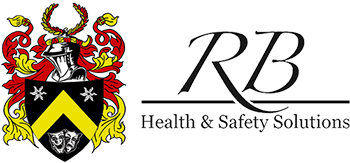Published 24 Jan in
5 Things to Watch for in Theatre Health & Safety
With 2016 drawing to a close, it’s a good time for taking stock and making plans alike. Here at RB Health and Safety we thought we’d draw your attention to five things you should have your eye on when dealing with health and safety plans for your theatre.
5. New CDM Changes for the Entertainment Industry
The Construction (Design and Management) regulations (CDM) were updated in 2015, but many theatres have yet to engage with them. This applys to fit up’s, get out and any upcoming modifications, repairs, or other construction work. If you have any of these planned or even pencilled in for 2017, it’s worth taking a look at the Health & Safety Executive’s advice – but we also recommend consulting carefully to make sure you don’t overlook anything
4. Safe Operation of Tallescopes
Tallescopes can be invaluable for some jobs within theatres, but they are nonetheless not always the right equipment. When a tallescope is called for, using it safely and correctly requires the use of the Association of British Theatre Technicians’ (ABTT) Code of Practice, and everyone involved should be familiar with the CoP and trained in tallescope operation.
3. The Importance of Risk Assessments
It’s not enough simply to make sure that risk assessments are always completed (although, of course, even that doesn’t always go without saying!) but you also have to keep any risk assessments on file up to date. Without regular reviews, the time and money you’ve invested in risk assessments can quickly become wasted and – far worse – you’ll find yourself operating without an accurate idea of the risks involved.
2. When Was Your Last Health & Safety Audit?
Health and safety audits should be conducted on a regular basis. As with risk assessments, the concern is that as they are allowed to fall out of date you find yourself in a situation where you don’t have an accurate idea of the risks your activities will incur. Worse yet, if you go by what an outdated audit says – you’re operating with a completely wrong idea!
We recommend that audits be conducted annually so that any flagged issues can be attended to promptly rather than given time to develop.
1. Keep Up a Staff Training Needs Analysis
This doesn’t need updating so often, and you’ll know when it changes; it changes as staff arrive, leave, and complete training courses. Once you have one it’s very easy to maintain, but it’s important all the same – if you don’t know where the gaps are in your safety proficiencies, or who can safely be assigned to what duty, you’re going to run many more risks than you should be.
Taking the time to address these five points will give you a good platform to build on in 2017. If you’d like to learn more about any of them, or to call us in to consult, you can contact us here.
